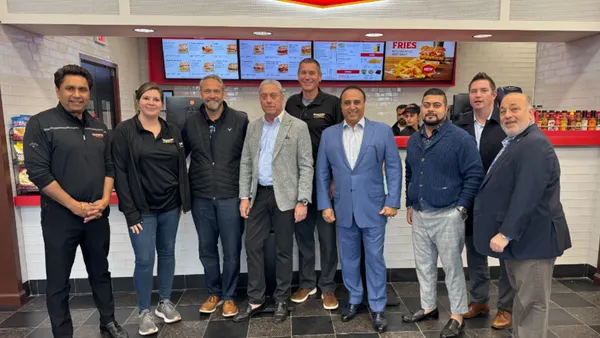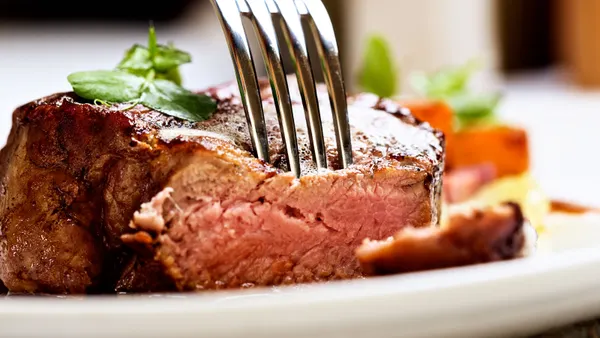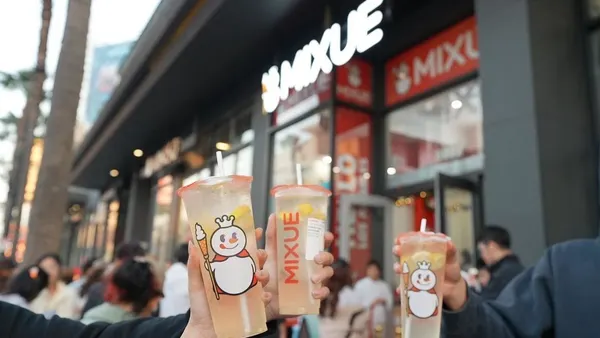Dive Brief:
- Fast-food drive-thrus are losing about $178 million per 2,000 locations each year, according to press release on SeeLevel HX's 2019 QSR Drive-Thru study emailed to Restaurant Dive. That translates to an average loss per store of $89,000.
- Complex menu boards are impacting kitchen layouts and drive-thrus as a whole, leading to increased service times and inaccurate orders, according the study that was done in conjunction with QSR Magazine.
- Innovative menu boards can improve drive-thru performance and save QSRs $28,000 per store and $56.3 million per 2,000 locations.
Dive Insight:
There seems to be quite a paradox happening right now in the quick-service space. Chains across the board are making significant investments in drive-thru technologies specifically aimed at speeding up service, providing better accuracy and creating more personalized experiences. McDonald's is the biggest example of this — pouring $300 million into Dynamic Yield in March and acquiring voice-based conversational technology company Apprente in September. Other chains, like Sonic, have made similar investments aimed at making the drive-thru channel a smoother, quicker, more accurate experience.
Many chains are also implementing initiatives that specifically improve speed of service. McDonald's said it shaved off 20 seconds during Q3 following initiatives that reduced menu complexity and gave more staff tools to cook faster. Wendy's focused on employee training and faster credit card processing and started to see results during Q2. Taco Bell improved speeds by seven seconds during the second quarter. Jack in the Box is testing digital menu boards, branding elements, canopies and designated parking for pickup and delivery.
There's a reason the drive-thru channel is a major focus. They make up 50% to 70% of business in fast food, and the demand for the channel is still growing. According to a recent study from the National Restaurant Association, 39% of customers have used the drive-thru more this year than they did a year ago.
While these efforts are still in the early stages, the study revealed that there is still a long way to go. Technology and speed competitions among franchisees aren’t going to solve all the category’s drive-thru problems. As SeeLevel HX CEO Lisa van Kesteren told Forbes, there are a number of other issues — crowded menus, mobile ordering and delivery among them — that are slowing down back-of-the-house operations. Other changes may need to happen, like kitchen redesigns, menu simplification or, as some chains are exploring, virtual kitchens.
Whatever the solution, it's critical for restaurants to solve these speed and accuracy issues. Consider, for example, that a $90,000 annual loss would equate to about 6% of Jack in the Box's $1.5 million average unit volumes. As operators navigate rising food and labor costs, as well as intensified competition across the industry, that's a hefty chunk to compromise.









